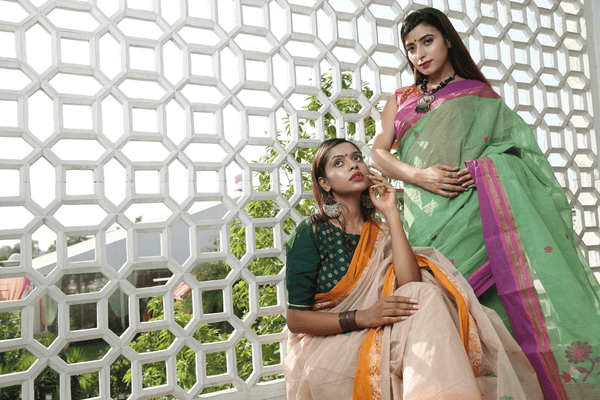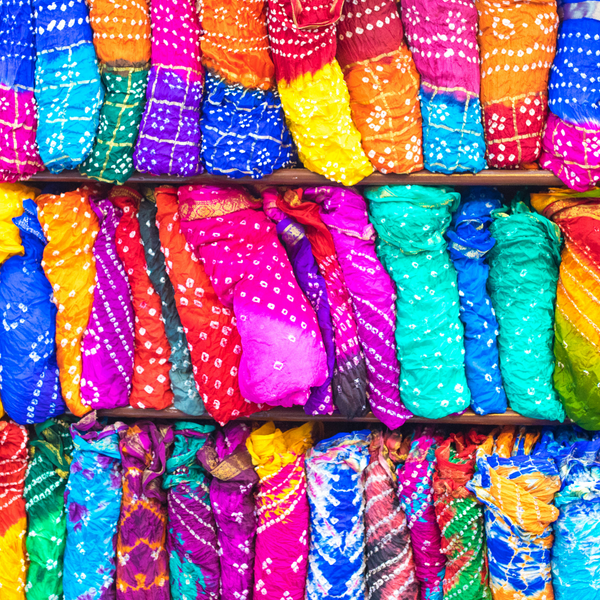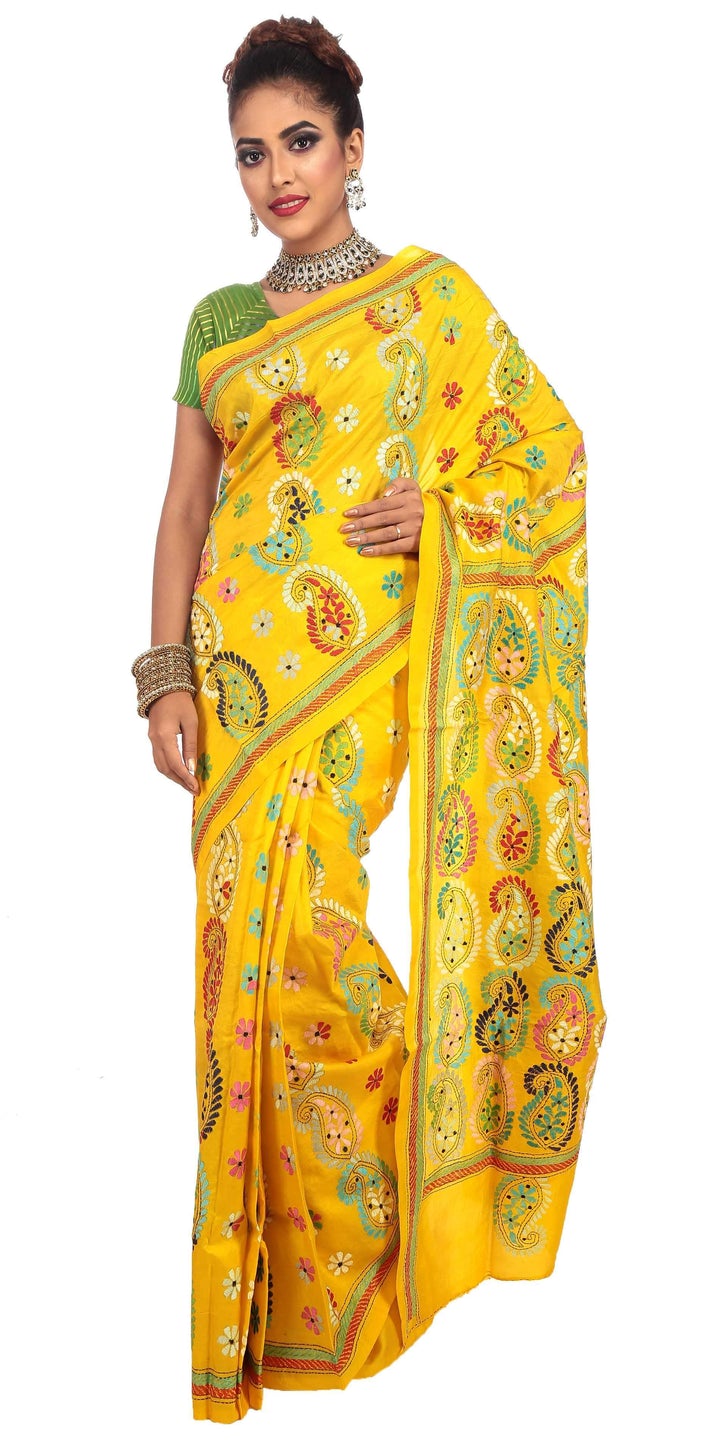India has a magnificent textile history. The handlooms and handicrafts of India are quite famous in the world. Hand-spun and hand-woven fabrics have always been an integral part of India’s identity.

The economic development of the rural India truly depends on the production of handloom sarees and other handloom products. A diverse variety of handloom sarees, with some special and distinctive features are produced in the various parts of the country.
It takes almost three to four days to complete the work on one handloom saree.
Here are some of the very famous varieties of handloom sarees in India:
Tant Sarees:

The most popular variety of handloom sarees in India is the Tant Saree, which come from the artistic state of West Bengal. Soft, light and very comfortable to drape, these sarees are characterized by a wide border with elegant silk thread work, floral or paisely motifs and an elaborate design on the pallu. It comes in a wide range of colors and designs.
Bandhini Sarees

A Bandhej Saree or a Bandhani Saree is mostly worn by women of Gujarat and Rajasthan in India.
Bandhini is a traditional art of tie and dye which is indigenous to the state of Gujarat. The unique and vibrant Bandhini sarees are available in many varieties such as leheriya, panetar and gharchola. These sarees are very popular as festive wear.
Banarasi Sarees

One of the most popular and exquisite forms of traditional handloom sarees is the Banarasi saree. These sarees are ideal for weddings and other festive occasions. These sarees are known as the symbol of opulence. The detailed zari work done with pure silver and golden threads, and the the intricate jaal and mina work give a unique and magical touch to these silk sarees.
Patola Sarees

Patola handloom sarees hail from the state of Gujarat. Once worn only by those belonging to royal and aristocratic families, these sarees come with a hefty price tag. Each patola saree is a representation of expert craftsmanship and hard labor as it showcases intricate motifs, bright colors and complicated geometric designs done on a special type of fabric called Patola silk.
Sambalpuri Sarees
A Sambalpuri saree has its roots in the state of Orissa. It is one the most popular handloom sarees. These sarees are known for their elaborate designs and motifs like like shankha (shell) and chakra (wheel). Each Sambalpuri saree is woven in a period of two to three weeks. The best Sambalpuri sarees offer an extensive variety of colors and designs. These sarees favor every budget and taste.
Munga Sarees
Munga handloom sarees of Assam are crafted in traditional silk fabric. This silk fabric comes from Assam. These Silk sarees are a graceful treat. With a generous amount of zari work, evergreen traditional motifs highlighting borders, and a unique three-dimensional effect, these sarees are designed for culture-perfect and socially impactful looks.
Chanderi Sarees
The traditional Chanderi handloom sarees hail from the state of Madhya Pradesh. They are light weight sarees are made of soft cotton with a silky texture. These sarees look extremely graceful. The narrow border and booti designs add to the beauty of these sarees.
Kantha Sarees

Another gift of the eastern state of West Bengal is the amazing Kantha work saree design, which exhibits stylish patterns in the form of simple stitching all over the saree surface. The designs may feature objects such as flowers, vines and fish and are a work of craftsmanship.
Tussar Silk Sarees

Tussar Silk Sarees are elegant handloom sarees which come from Bihar and carry the touch of the famous Madhubani painting designs, which make them absolutely unique. It comes in non mulmul texture and carries a cotton blend, giving an amazing appeal to the fabric.
Kanjivaram/Kanchipuram Silk Sarees
The origin of these majestic sarees is the Kanchipuram region of Tamil Nadu. This grand silk saree is considered the queen of all the handloom sarees. Woven with Pure mulberry silk, it is mostly worn by the brides of South India for a special occasion.
Today, our age-old heirlooms are struggling to survive. Government benefits hardly reach the traditional weavers. Due to a cut throat competition from the power loom industry and people steadily moving towards fast fashion the younger generations of these weavers are forced to discontinue this legacy and seek other employment venues.

